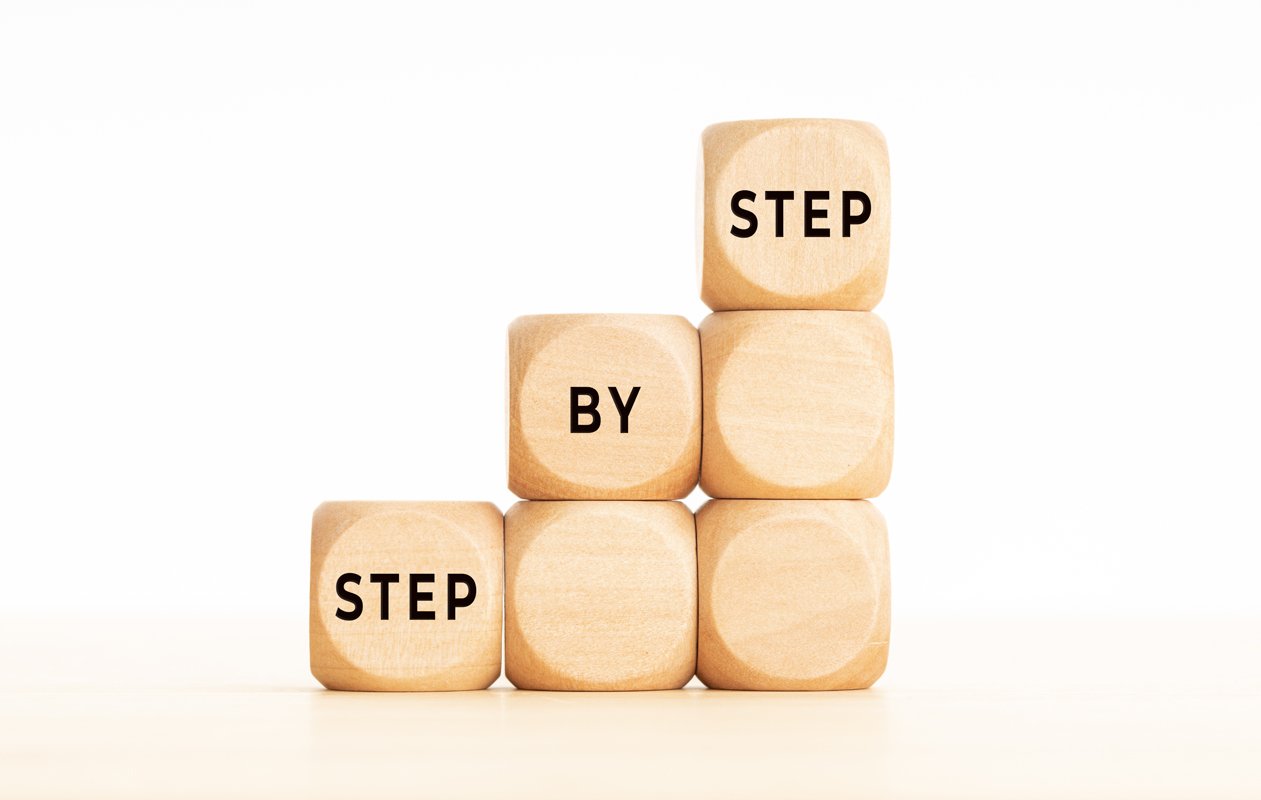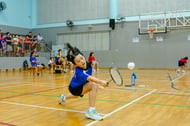By Circle Editorial Team

There are two main roads when it comes to growth: burst and passive. In the fitness industry, the burst route is probably the most visually appealing. Social media is awash with packages that promise you the moon and back within days. “Reverse the symptoms of ageing in four weeks”, “Lose 5kg in 1 week”, or even “Increase Bust Size in 1 week”. You name them, the web has them.
And who could blame us for falling for these programs? We live in a society where speed and efficiency reign supreme, after all. But there is always a catch. Even if it delivers results (of some kind), it can often be of the wrong kind, fleeting and unsustainable, or that we are likely to quit halfway through.
It would seem as though all that glitters is not gold. Which is why, if you were to ask any of the fitness instructors we have on Watch for beginners’ advice, they’d almost always recommend starting small. Turns out, this would be a core tenet of Kaizen, a Japanese business philosophy for success that traces its roots to the manufacturing industry.
What is Kaizen?
Kaizen is a Japanese term meaning "change for the better" or "continuous improvement." Instead of encouraging large, radical changes to achieve desired goals, organizations are recommended to introduce small improvements, preferably ones that could be implemented on the same day.
Kaizen is achieved in four steps: Plan, Do, Check, Act, or PDCA.
Plan: Establish objectives and processes required to deliver the desired results.
Do: Carry out the objectives from the previous step.
Check: Comparing the actual results to the expected outcomes to highlight any similarities and differences.
Act: Root causes of issues that result in sub-optimal performances discovered in the previous step are investigated, found and eliminated by modifying the process.
The process is then repeated throughout the production cycle to achieve continuous improvement while adhering to the principle of adopting small steps to increase the baseline.
Why Kaizen?
Personalized
What works for you may not work (as well) for me. The bog wash one size fits all packages are unable to account for individual externalities that can impact the effectiveness of a fitness or diet routine.
Applying Kaizen requires you to understand your baseline and body needs, before coming up with a methodical plan for continuous improvement that fits within your own work-life schedule. This is not too dissimilar to the concept of Exercise Prescription.
Related Reading: Movement and Exercise is Medicine
Sustainable
Any change, even a positive one, can be scary. Big, dramatic changes can heighten our fear completely blocking our success. By taking small steps, we are able to disarm the body’s fear response.
Physiologically, small steps allow us to rewire the nervous system to bypass the fight or flight response, unlock our creativity, and create new connections between neurons laying down the pathway for new habits.
Confidence
The failure to stick to new habits isn’t because it is too hard. It is usually because we doubt our ability to change. The daunting prospect of self-improvement induces the fear of failure, which would then dissuade us from starting altogether.
However, if you set goals that are easy and if you can achieve them, you can start building confidence and prove to yourself that you’re ARE self-disciplined and that you CAN exercise. Apart from that, small wins will motivate you to do more.
There will come a time when you need to step out of your comfort zone. Since those small victories have shown that you have what it takes to succeed, this gives you the confidence to start stretching your boundaries and eventually step out of it.
How to apply Kaizen?
Small actions should take very little time or money. They should be so small, it would be hard to fail. I know what you’re thinking though; “These steps are so small, I’ll never reach my goal at this pace!” The thing is, some things are just not meant to be rushed. Treat it like a marathon - if you were to expend all your energy right at the start for big gains, you’d end up with nothing left in the tank after a short while.
Small steps are better than no steps at all. Plus, after a successful step one, it may lead to a comfortable second step, then a third, and so on until the change is mastered. Here are some examples of small steps you can take to start adding more movement into your daily life. Before you know it, you’ll be exercising and actually enjoying it!
- Park a bit further away from your destination, whether it’d be your home, work, or the shops, and walk the distance.
- Climb at least one flight of stairs before taking the lift.
- Take the long way back from lunch.
- Dedicate time for some simple deskercises.
Misconceptions
While practicing Kaizen can help nurture good habits, it is not immune to the devastating effects of common fitness misconceptions. You would think that the common tropes of outperforming your last, #preveryday, or rep increments every workout; would go hand in hand with Kaizen, which is all about continuous improvement.
The reality is anything but. For example, let’s say you’ve decided to do one more pushup each time you train, and you exercise about 3 times a week on average. Does doing an additional 150 pushups in one session after one year sound feasible to you?
It is therefore very important to temper one’s expectations when it comes to fitness, especially if you are just starting out. Letting your body take the lead in telling you when you can take the next step can help reign in the overzealous streak and prevent you from making too big or too quick of a leap.
As we start to reintegrate ourselves into pre-pandemic life, taking these small steps can help reintroduce exercise into our lives. Here on Circle, we have a plethora of options for those of you ready to take the next step. From programs to classes, we’ve got one that is sure to suit your fancy. Here’s to living a better life, one small improvement at a time!
To receive the latest updates on the happenings in the Singapore sports scene, follow GetActive TV on Facebook and Instagram!
Related Articles
Recent Events & Programmes
Related Articles
Related Articles
View All[BlogPost 164438712123 NSG 2024 Badminton: Senior Div Girls Quarter-Finals, BlogPost 164238055490 Evergreen Aleksandar Duric Still Making Headlines at 53, BlogPost 164170080646 NSG 2024 Rope Skipping: Junior Div Girls Freestyle Team Finals, BlogPost 162884973666 Move and Rest Better With Data From Your Own Body, BlogPost 163393049482 Life Comes Full Circle For Serangoon Garden Secondary School's Fahrish Khan, BlogPost 163258797651 Making Golf a Sport for All, BlogPost 162512222328 NSG 2024 Sepaktakraw: Senior Div Yuhua Primary School vs Qihua Primary School, BlogPost 162233592997 Gritty Lions Suffer Loss to China, BlogPost 162089384371 On Your Mark, Get Ready, Go Running, BlogPost 161670652697 Lions' Excellent Showing Against China, BlogPost 161435270031 Ogura Optimistic for Exciting Clash against China, BlogPost 161127614758 The Future of Basketball in Singapore: Why 3x3 is Here to Stay, BlogPost 161033673012 The Active Lifestyler's Guide to the New ActiveSG Delta Sport Centre, BlogPost 161128356680 Grand New Champions Crowned at WTT Singapore Smash 2024, BlogPost 160844835218 NSG 2024 Table Tennis: C Div Boys Pool Round, BlogPost 160210745115 NSG 2024 Basketball: Senior Div Girls Tampines Primary School vs Frontier Primary School, BlogPost 159881180544 Whirlwind Return to Women's Football, BlogPost 159633541417 Singapore Smash to Elevate a New Legacy, BlogPost 158983580420 NSG 2024 Rugby: B Div Damai Secondary School vs Peirce Secondary School, BlogPost 159003960202 SFA Fiesta: Kicking off 2024 to a Roaring Start, BlogPost 158830735126 NSG 2024 Football: B Div Girls Preliminary Round Meridian Secondary School VS Bowen Secondary School, BlogPost 158536989718 Team Nila Volunteers Recognized At Awards Ceremony, BlogPost 158270107806 NSG 2024 Hockey: B Div Boys Preliminary Round Raffles Institution VS St. Hilda Secondary School, BlogPost 157966862615 NSG 2024 Floorball: B Division Preliminary Rounds Kick Off!, BlogPost 157562433712 What Is Safe Sport?, BlogPost 157559446197 Sengkang Secondary: Cultivating Well-Rounded Footballers, BlogPost 157368261167 New National Training Centre for Cricket at West Coast Ground, BlogPost 155340164987 Active Ageing with Joey Bonifacio, BlogPost 155930815517 Inaugural Singapore Youth League kicks off from 24th February 2024, BlogPost 155340164727 Bukit Canberra : the Coolest Spot in the North, BlogPost 155368905255 How Padang Fandi Inspired Ayden to Chase his Dream, BlogPost 154755572826 Ageing Backwards with Elizabeth Cheang, BlogPost 154094657315 Running For Fitness, BlogPost 153318636178 Excitement Builds for FIBA 3x3 Asia Cup 2024, BlogPost 153198644247 World's Top Four Confirmed for 2024 HSBC Women's World Championship, BlogPost 149413941770 Cultivating Your Kids’ Interest in the Outdoors, BlogPost 149413941163 Making Sport More Appealing for Our Kids, BlogPost 149412549409 Solo Or Team Sport – Choosing the Best for Your Child, BlogPost 151197478798 Former Lions Stalwart Baihakki Khaizan Sheds Light on New Accreditation to Elevate Grassroots Football and Youth Development, BlogPost 80703591291 New Year, Fitter You! Here are the top 3 workouts for the New Year, BlogPost 81171151456 7 Reasons Why Sports are Great for Children’s Mental Health, BlogPost 80542065330 17 Best Yoga Classes & Studios in Singapore [+ Rating & Prices], BlogPost 149404351798 From Brush to Lens: A Student's Journey in the World of Art and Sports Photography, BlogPost 149402825063 The Benefits of Active Parenting, BlogPost 149397832009 Sweden Claim 9th Straight Gold at the Women's World Floorball Championship, BlogPost 149397831449 Lion City Sailors Win 2023 Singapore Cup, BlogPost 148511324266 Pitch Perfect with Jonathan Teo, BlogPost 148511724402 Seniors: Increase your flexibility bit by bit with these stretches, BlogPost 147866574167 A Valuable Experience In Spain for Singapore's National Development Centre U-14 Boys, BlogPost 146915317264 How one magical Kallang night changed the lives of Abirami and Daania forever]







.jpg?width=162&height=60&name=2XURUN2024%20-%20KV%20(1920%20x%20700px).jpg)

